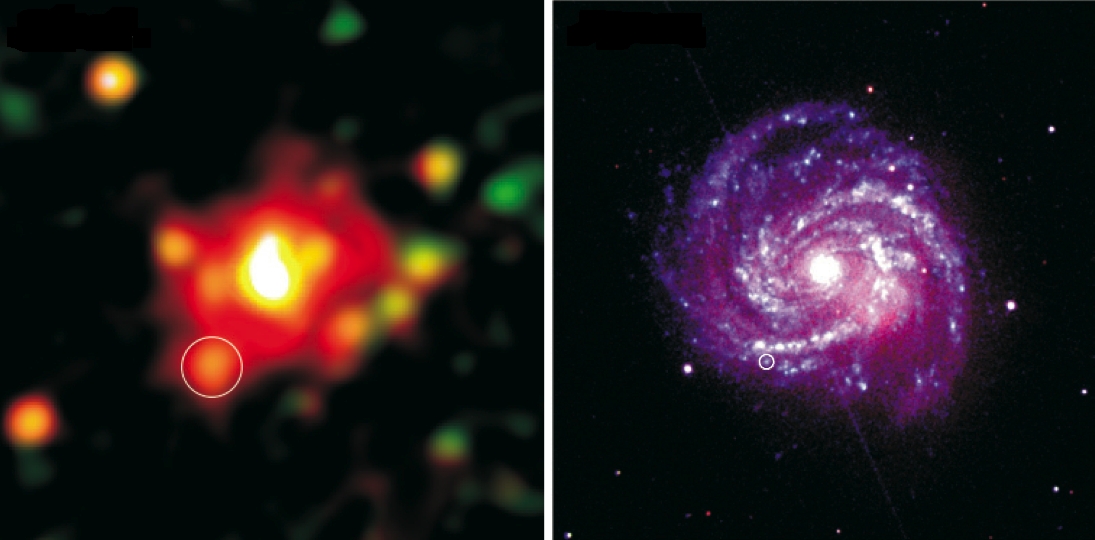
 Credit: NASA/ESA/Immler et al.
Credit: NASA/ESA/Immler et al.
Not Fade Away
It usually is that supernovae brighten briefly then fade quickly, at least in
X-rays. Usually they fade considerably in onlyh a matter of months. But
sometimes there are exceptions. Take SN 1979c in the M100 spiral galaxy, for
instance. Even though the star exploded about 24 years ago, it refuses to go
away. The images of the
supernova shown above were obtained by the XMM-Newton X-ray
observatory in 2001. The image on the left was obtained by the EPIC X-ray
cameras and shows an X-ray bright point of light at the position of the
supernova (circle). The image on the right was obtained by the Optical Monitor
camera on XMM-Newton, and shows (at higher spatial resolution) the blue and
ultraviolet light still being emitted from this extragalactic SN. Most likely
the brightness and longevity of this supernova has to do with the environment in
which SN 1979C exploded. Evidently there's a large amount of gas and dust in the
vicinity, probably deposited by the supernova's progenitor in the centuries
before the explosion. Astronomers have used the amount of X-ray emission to do a
forensic study of the amount of mass lost by the progenitor just prior to the
explosion.
Last Week *
HEA Dictionary * Archive
* Search HEAPOW
* Education
Each week the HEASARC
brings you new, exciting and beautiful images from X-ray and Gamma ray
astronomy. Check back each week and be sure to check out the HEAPOW archive!
Page Author: Dr. Michael F. Corcoran
Last modified Monday, 26-Feb-2024 17:46:54 EST


